News
Which are the best Chinese car brands?
Chinese brands are hitting the UK car market in force – we pick out the winners from the also-rans in our at-a-glance guide!


Words by: Erin Baker

Additional words by: Dan Trent
Last updated on 10 January 2024 | 0 min read
Are you nervous about buying a car from an unknown Chinese brand? Perhaps you worry about reliability, or quality. Maybe you’re concerned about the political impact of buying a car from a country with which the UK has tense relations, and against whom the UK has traditionally guarded the privacy of its data and security.
The reality, however is, that last ship has largely already sailed. Many of the cars we currently drive are manufactured in, and exported from, China, including the MG4 and Tesla Model 3. China has already indisputably stolen a march on everything from electric cars, to battery technology, to the mining and processing of the rare earth materials needed to build them. Many more cars contain technology and parts imported from China, and we are heavily reliant on batteries from the same. Geopolitics aside here’s an objective look at the new car brands and vehicles coming from China and entering the UK market now, and a look at how they compare with more established brands from Europe, Japan, Korea and the rest. The two obvious selling points for all the cars mentioned below are price and reliability. The sticker prices on models from most of the Chinese brands listed below aren't the cheapest, but they represent good value and, most crucially, according to the Auto Trader Road to 2035 report, if these new brands wished to drop them further and engage in a price war for customers, they could drop them a lot lower. Labour costs are low, parts and material supplies are plentiful and they are already manufacturing at volume, so are able to launch in the UK by undercutting European rivals, in many cases by as much as £10,000 per car. To give you an idea of just how much further they could go, the BYD Dolphin sells in China for the equivalent of £13,000; in the UK the same car is priced at £25,000. GWM Ora sells its Funky Cat in China for £12,000; in the UK it’s £31,000. As for reliability, although they are new to us, these brands have been turning out hundreds of thousands of electric cars in China for a good few years (last year they sold 24m electric cars - more than America and the EU combined). This has given them an inherent head start over European rivals and their technology is well proven, so reliability shouldn’t be an issue, and we may find they offer industry-leading long warranties of eight years or more.
The reality, however is, that last ship has largely already sailed. Many of the cars we currently drive are manufactured in, and exported from, China, including the MG4 and Tesla Model 3. China has already indisputably stolen a march on everything from electric cars, to battery technology, to the mining and processing of the rare earth materials needed to build them. Many more cars contain technology and parts imported from China, and we are heavily reliant on batteries from the same. Geopolitics aside here’s an objective look at the new car brands and vehicles coming from China and entering the UK market now, and a look at how they compare with more established brands from Europe, Japan, Korea and the rest. The two obvious selling points for all the cars mentioned below are price and reliability. The sticker prices on models from most of the Chinese brands listed below aren't the cheapest, but they represent good value and, most crucially, according to the Auto Trader Road to 2035 report, if these new brands wished to drop them further and engage in a price war for customers, they could drop them a lot lower. Labour costs are low, parts and material supplies are plentiful and they are already manufacturing at volume, so are able to launch in the UK by undercutting European rivals, in many cases by as much as £10,000 per car. To give you an idea of just how much further they could go, the BYD Dolphin sells in China for the equivalent of £13,000; in the UK the same car is priced at £25,000. GWM Ora sells its Funky Cat in China for £12,000; in the UK it’s £31,000. As for reliability, although they are new to us, these brands have been turning out hundreds of thousands of electric cars in China for a good few years (last year they sold 24m electric cars - more than America and the EU combined). This has given them an inherent head start over European rivals and their technology is well proven, so reliability shouldn’t be an issue, and we may find they offer industry-leading long warranties of eight years or more.
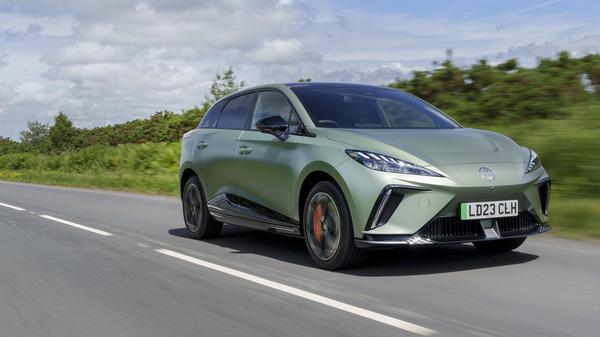
BYD
The name stands for Build Your Dreams, although it’s questionable whether the Atto 3, Dolphin and Seal are yet up to the task. If numbers alone worked, however, BYD would win, on the basis it has 200 designers and 10,000 engineers, and has sold 3.5 million cars. It’s a measure of its domestic clout that none other than Toyota has partnered with it to access its battery technology, even selling some China-only models based on the bZ4X we get here but under BYD branding.
Of the brand’s own cars we’ve driven so far, the Atto 3 is a family-sized electric SUV with a maximum 263 miles of range. It has all the features and safety kit you could want, including a massive touch-screen that rotates and door pockets and speakers shaped like guitars. It’s also good value, with pricing to match similar petrol-engined SUVs. But it feels spongey to drive and the materials and design inside are way too wacky for smart European drivers. Meanwhile, the good news about the Dolphin is that it’s not yet another SUV. The bad news is that it goes head-to-head with the massively popular MG4. Again, BYD’s old-fashioned styling is somewhat out of step with European trends for quirky, retro or streamlined. But, again, it’s good value, with a maximum 265-mile range. Finally for now there’s the Seal, a Hyundai Ioniq 6 rival with the option of a 500 horsepower-plus performance model with over 300 miles of range. While it still has some rough edges it’s BYD’s most convincing offering yet, and shows how quickly the Chinese firms are learning.
Of the brand’s own cars we’ve driven so far, the Atto 3 is a family-sized electric SUV with a maximum 263 miles of range. It has all the features and safety kit you could want, including a massive touch-screen that rotates and door pockets and speakers shaped like guitars. It’s also good value, with pricing to match similar petrol-engined SUVs. But it feels spongey to drive and the materials and design inside are way too wacky for smart European drivers. Meanwhile, the good news about the Dolphin is that it’s not yet another SUV. The bad news is that it goes head-to-head with the massively popular MG4. Again, BYD’s old-fashioned styling is somewhat out of step with European trends for quirky, retro or streamlined. But, again, it’s good value, with a maximum 265-mile range. Finally for now there’s the Seal, a Hyundai Ioniq 6 rival with the option of a 500 horsepower-plus performance model with over 300 miles of range. While it still has some rough edges it’s BYD’s most convincing offering yet, and shows how quickly the Chinese firms are learning.

GWM Ora
A subsidiary of Great Wall Motor, GWM Ora joined the party with the the Funky Cat, a Polo-sized electric hatchback. Having successfully grabbed everyone’s attention the novelty name has since been dropped, though, the car now known as the slightly less funky sounding GWM 03. It will be joined in due course by more models, a ‘premium saloon’ known as the GWM 07 among them.
As an opening gambit the Funky Cat/03 has not lived up to its name in terms of design, the attempt at some Mini-influenced retro vibes turning heads but not quite standing closer scrutiny. But it still looks fun in a way the Volkswagen Polo and Peugeot 208 don’t. It’s also good on range - nearly 200 miles - and interior tech, though some of the safety systems are a bit intrusive.
As an opening gambit the Funky Cat/03 has not lived up to its name in terms of design, the attempt at some Mini-influenced retro vibes turning heads but not quite standing closer scrutiny. But it still looks fun in a way the Volkswagen Polo and Peugeot 208 don’t. It’s also good on range - nearly 200 miles - and interior tech, though some of the safety systems are a bit intrusive.

Geely
A huge player in its home Chinese market, Geely Automobile Holdings employs over 40,000 people in factories and facilities all over China. The name may not ring many bells among European buyers as such, Geely instead leveraging its acquisition of more established names like Smart, Lotus and Volvo to establish a foothold here and impressing with the way it has sympathetically curated each brand to play to its particular strengths, while they all simultaneously benefit from the formidable shared resources of the wider group. Resources that include its own satellites, the first nine of what will eventually be a 240-part ‘constellation’ already launched with more soon to follow.
By employing its technology in brands already familiar to European buyers Geely cleverly gets around the unknown quantity aspect that may prove a stumbling block for other Chinese companies, the fact it leaves the styling and design in the hands of the original firms meaning a Volvo still looks and feels like a Volvo, even if the tech powering it is Chinese. Same goes for Smart, Lotus and its other brands. It also frees up the potential for China-only variants catering to specific domestic tastes, like the Volvo EM90 luxury MPV.
By employing its technology in brands already familiar to European buyers Geely cleverly gets around the unknown quantity aspect that may prove a stumbling block for other Chinese companies, the fact it leaves the styling and design in the hands of the original firms meaning a Volvo still looks and feels like a Volvo, even if the tech powering it is Chinese. Same goes for Smart, Lotus and its other brands. It also frees up the potential for China-only variants catering to specific domestic tastes, like the Volvo EM90 luxury MPV.
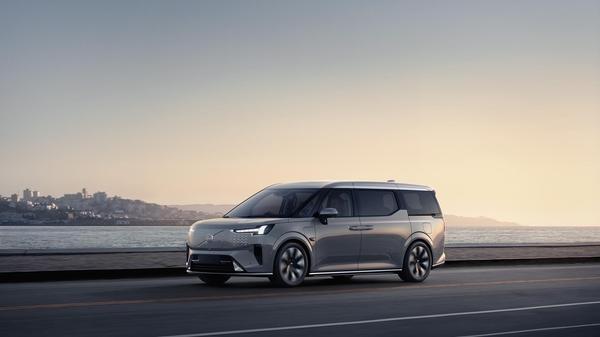
MG
All things relative MG feels like one of the more established Chinese brands, its state-owned SAIC Motor Corp parent company taking an early lead with its selection of keenly priced hatchbacks and SUVs, many of them electrified. If a little outdated in terms of style and quality they’ve won a huge following among cost-conscious British buyers perhaps reassured by the return of a traditional badge, even if modern MG is a far cry from the string-back driving glove, classic car image of old.
From those bargain foundations the MG4, the brand’s first really contemporary looking car, has gone even further, and is already a fixture on British roads. Now available with the option of long-range and supercar-chasing XPower high-performance versions, it’s both affordable and fun to drive with a confidence inspiring seven-year warranty to boot. The British-designed Cyberster sports car meanwhile seeks to reinvent MG’s traditional sporting image for the electric age.
From those bargain foundations the MG4, the brand’s first really contemporary looking car, has gone even further, and is already a fixture on British roads. Now available with the option of long-range and supercar-chasing XPower high-performance versions, it’s both affordable and fun to drive with a confidence inspiring seven-year warranty to boot. The British-designed Cyberster sports car meanwhile seeks to reinvent MG’s traditional sporting image for the electric age.
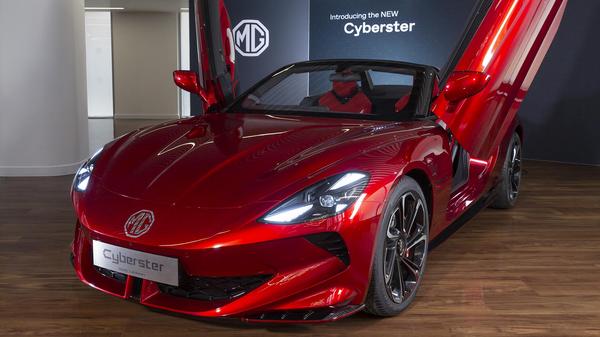
Nio
Nio has been around Europe (but not the UK) for years now, but with only an ultra-expensive hypercar for billionaires and some smart Nio House clubs for members to work or rest in while their cars charge.
Finally, it is due in the UK next year. Customer service is high on Nio’s agenda. There’s a Nomi personal assistant in the cars, and the brand even has its in-house wine for customers to buy now. It’s also rolling out battery swap stations in markets including Europe where you can swap your dead one for a fresh unit in as little as three minutes instead of waiting to recharge it. Our first experience of Nio has come with the EL6 SUV and we were impressed with the tech, power and pace but reckon there’s still work to do on handling. The ET5 electric saloon and ET5 electric Touring (estate) will appear at this summer’s Festival of Speed, then there’s the ES8 and EL7 SUVs, and the ET7 bigger saloon. Confused yet? You may soon be! Some great names and big brains have worked for Nio over the past few years, and it competes in Formula E. The UK is not an add-on market but a well-considered launch. We back Nio to make some headway.
Finally, it is due in the UK next year. Customer service is high on Nio’s agenda. There’s a Nomi personal assistant in the cars, and the brand even has its in-house wine for customers to buy now. It’s also rolling out battery swap stations in markets including Europe where you can swap your dead one for a fresh unit in as little as three minutes instead of waiting to recharge it. Our first experience of Nio has come with the EL6 SUV and we were impressed with the tech, power and pace but reckon there’s still work to do on handling. The ET5 electric saloon and ET5 electric Touring (estate) will appear at this summer’s Festival of Speed, then there’s the ES8 and EL7 SUVs, and the ET7 bigger saloon. Confused yet? You may soon be! Some great names and big brains have worked for Nio over the past few years, and it competes in Formula E. The UK is not an add-on market but a well-considered launch. We back Nio to make some headway.
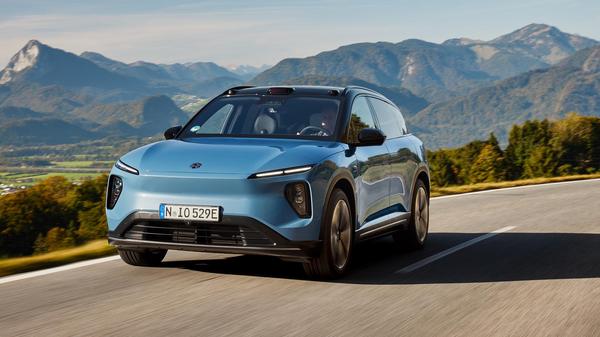
XPeng
The flagship SUV for XPeng is the G9 which, like so many of the cars mentioned here, is already on sale in Norway, Sweden, Denmark and the Netherlands. But the P7 is the more volume-oriented, Tesla Model 3-benchmark offering that will interest most buyers. The brand should be here in 2024, although right-hand drive build is slowing things up a bit. The P7 is very Model 3 in its silhouette, and offers about 350 miles of range. There’s also a Performance version.
The cars offer a ‘VIP lounge’ ambience inside, apparently, so expect some tech flourishes and better materials than we’ve seen in some other Chinese brands.
The cars offer a ‘VIP lounge’ ambience inside, apparently, so expect some tech flourishes and better materials than we’ve seen in some other Chinese brands.
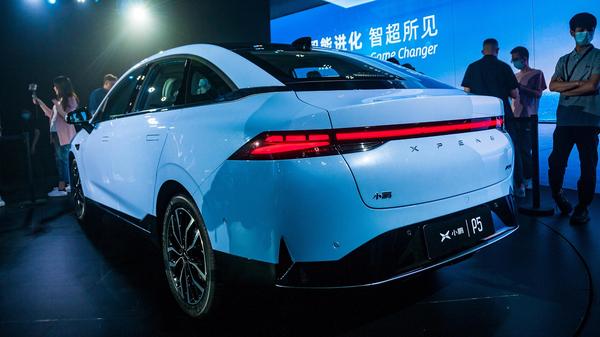
HiPhi
HiPhi is a luxury Chinese car brand from the rather scary sounding Human Horizons parent company in Shanghai, selling very expensive electric cars. It has two models, the X and Z with the Y, a smaller, more affordable car joining in due course. It stands out from some of the other Chinese brands by having former JLR engineering director, Mark Stanton, on staff.
In more detail the HipHi X is a Tesla Model X competitor, with similarly funky doors and a similarly scary price tag. It will be rapid, with a long-distance range, plenty of space and a good ride and should be in the UK soon. Meanwhile the Z model is a low-slung, high-performance, sporty saloon/coupe, like the Porsche Taycan. It should offer comfortably over 300 miles of driving on one charge, all-wheel drive and fierce acceleration from a total output equivalent to 600 horsepower.
In more detail the HipHi X is a Tesla Model X competitor, with similarly funky doors and a similarly scary price tag. It will be rapid, with a long-distance range, plenty of space and a good ride and should be in the UK soon. Meanwhile the Z model is a low-slung, high-performance, sporty saloon/coupe, like the Porsche Taycan. It should offer comfortably over 300 miles of driving on one charge, all-wheel drive and fierce acceleration from a total output equivalent to 600 horsepower.
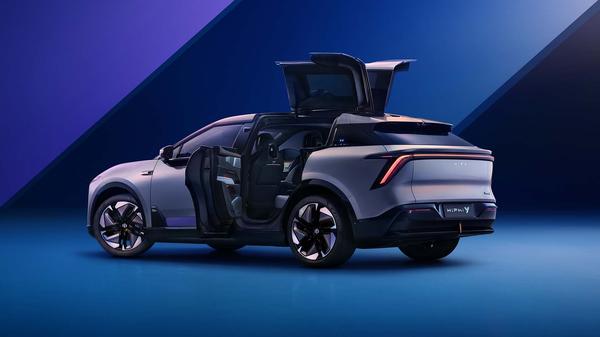
Omoda
Omoda sits under the vast Chery brand in China, so taps into a wealth of knowledge and experience. Its first model, the petrol-powered Omoda 5 SUV, arrives in the UK in February priced at about £25,000. A battery-electric version of the car will follow within months.
Omoda seems to have nailed European tastes, with a carefully restrained exterior and interior design, smart looking touch-screen and digital graphics. We’re cautiously optimistic about this brand, but have yet to drive either model and pricing will be key to how competitive it proves.
Omoda seems to have nailed European tastes, with a carefully restrained exterior and interior design, smart looking touch-screen and digital graphics. We’re cautiously optimistic about this brand, but have yet to drive either model and pricing will be key to how competitive it proves.
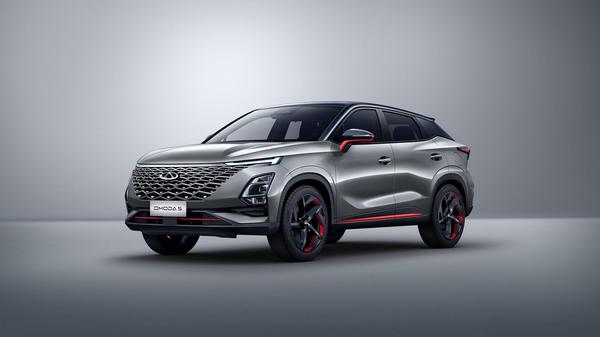
Zeekr
Another chip off the Geely block, the Zeekr X shares its foundations with the Smart #1 and Volvo EX30 and comes wrapped in bodywork styled here in Europe. That shows in a design way more cohesive than many Chinese rivals, while the smooth handling also meets the standards drivers here demand. Available in regular, single-motor form and a high-performance twin-motor option like its Smart and Volvo equivalents it comes across as a generally well-polished product, though some of the safety systems need a proper calibration before the car goes on sale.
There’s also the 001, another Tesla Model 3 style saloon and adapted from a model originally intended for Lynk & Co, which also sits within the Geely family. Already on sale in some European countries, we again encountered some wobbles in the driver assistance tech but performance and all-important perceived quality in terms of interior fittings and the premium vibe were all impressive.
There’s also the 001, another Tesla Model 3 style saloon and adapted from a model originally intended for Lynk & Co, which also sits within the Geely family. Already on sale in some European countries, we again encountered some wobbles in the driver assistance tech but performance and all-important perceived quality in terms of interior fittings and the premium vibe were all impressive.

Lynk & Co
Also part of Geely, Lynk & Co isn’t in the UK yet but will likely arrive here in due course, bringing with it its signature subscription-based ownership model. Pitched as a true disruptor, Lynk & Co’s offer is aimed at a younger generation of drivers attracted to more flexible ways of running an electric car more in tune with urban living and busy lifestyles.
Going by experience of other Geely-built models we’d expect competitive levels of design, quality and performance, big batteries as a given while the provocative tone of the brand’s marketing may win over an audience eager to drive differently. One to watch.
Going by experience of other Geely-built models we’d expect competitive levels of design, quality and performance, big batteries as a given while the provocative tone of the brand’s marketing may win over an audience eager to drive differently. One to watch.